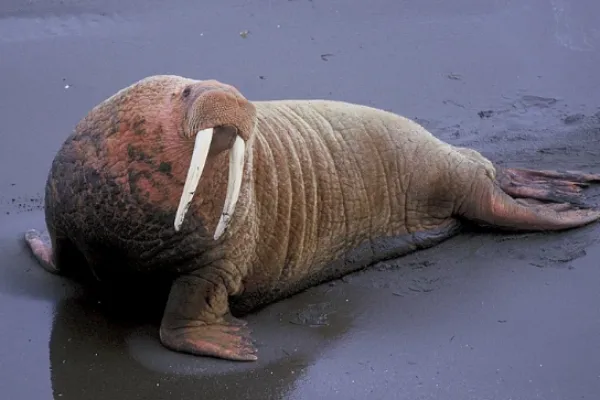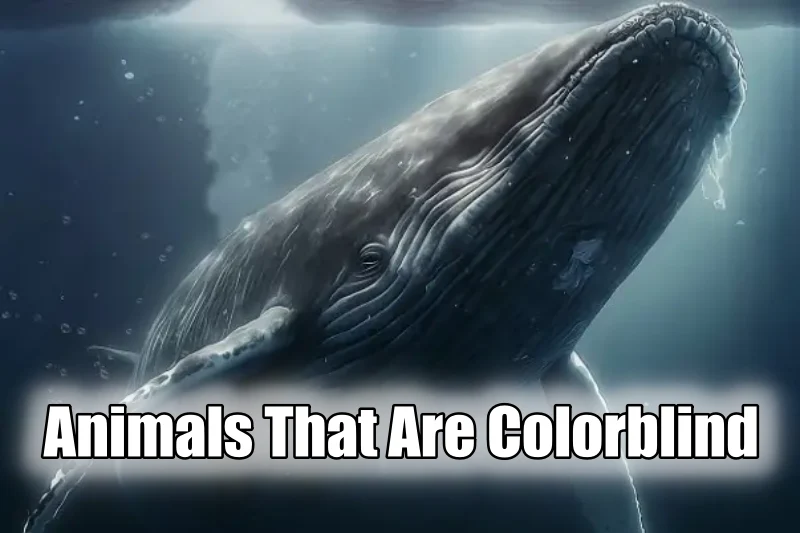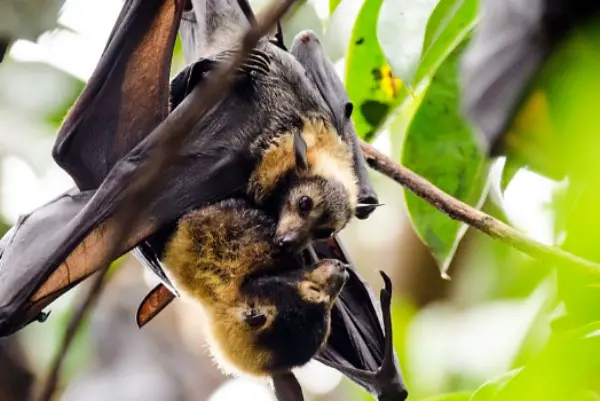Vision, like all the other senses in the body, has been subjected to evolutionary changes over the years. Loss of specific color vision is predominant in the animal kingdom, where animals become color blind to one or more colors, which do not play a significant role in their daily lives. A question that keeps surfacing is, Which are the Animals that are color blind? Therefore, in response to this question, we bring today’s article, 15 Animals that are Colorblind or See in Black and White. Without further delay, let’s get going with our write-up.
15 Animals That Are Colorblind
15) Sharks
In a recent study, it was found that some species of sharks have monochromatic vision. They can see their world in black, white, and gray shades.
In the study on 17 shark species, it was revealed that 10 (like the tiger shark) had only rod photoreceptors in their retinas, providing good night vision but making them colorblind, as they can switch between monocular and stereoscopic fields of view rest has a dichromatic vision.
14) Night monkey
The night monkeys are also another animal that is color blind. They have a monochromatic vision. This enables them to see colors. But they are blessed with other abilities.
They have spatial resolution, which makes their eyes suitable for seeing in low light. Mainly, these monkeys can see white, black, and some shades of gray. Also, it helps them get their prey and move during the night.
13) Jellyfish
Another animal is Tripedalia cystophora, a box jellyfish species. This species of animal has monochromatic vision due to its single type of opsin optical pigment.
As we are talking about its vision, it uses its lower eyes to locate obstacles and detect crustaceans under mangrove foliage, allowing it to swim freely and feed on the crustaceans it feeds on.
12) Owls
The next on the list are owls, especially great-horned owls. Most of us believe this bird can only see at night, but that’s not true; they can see during the day too, but their eyes are more sensitive to light than humans.
In their vision, they can see only the shades of white, gray, and black. This animal has few cones of color that make its color detection difficult. They are excellent hunters, and their vision and hearing abilities make them catch their prey easily.
11) Kinkajous
Kinkajous are nocturnal mammals found in Central and South America’s lowland rainforests. They have a keen sense of touch and smell but poor vision, making them reliant on touch and smell to avoid predation.
They are often referred to as honey bears due to their yellowish brown fur, but in Belize, they are known as “night walkers.” Their long tail balances them and serves as a fifth hand for climbing. Their five-inch long tongue helps them reach nectar and honey that may be out of reach.
10) Skates
A cartilaginous fish and a close relative to the rays, Skates are the only animals on the planet known to man who see the world in entirely black and white. Cone cells, which are responsible for color vision, are utterly absent in skates. Hence they are devoid of color vision.
This implies that any colored fish will appear in the shades of white and black on skates. Skates are marine and primarily feed on crabs, shrimps, lobsters, squids, small fishes, etc.
9) Bats
Bats lack color vision. They are nocturnal predators who mostly rely on their heightened sense of hearing and echolocation to navigate and look for prey. Therefore, they do not possess a keen sense of vision.
A study proves that fruit bats may either have only a long wavelength cone or a short wavelength cone.
This implies that certain Fruit Bats are monochromatic and hence, have lost the ability for total color vision. Their laryngeal echolocation over color vision is one of the finest examples of an evolutionary tradeoff in a species.
8) Golden Hamsters

Next up on our list of Animals that are colorblind, we have one of the most wanted pets, Golden Hamsters. Being nocturnal foragers, their vision suffers a deviation in terms of color vision.
Like Bats, Golden Hamster also relies on their other senses for navigation at night. They are monochromatic beings and therefore see only 1 color. Other color objects are mostly seen as black and white or in different shades of grey.
7) Common raccoon
Just like the previous members on this list of Animals with color vision, the Common Raccoons are nocturnal hunters too. Therefore, color vision isn’t of great importance to them. Scientists believe that raccoons are either color blind or possess partial color vision.
Their eyesight is adapted to low-light conditions and is not far-sighted. Raccoons mainly depend on their other senses, especially that of touch, to compensate for their poor color vision.
6) Harbor Seals

Seals are exceptionally well adapted for life which involves staying underwater for long periods. Their eyesight functions best when staying underwater in murky conditions. Since seals lack one of the ancestral cone classes, therefore they are colorblind.
However, the ability to distinguish colors remains like a water drop on a leaf, as some studies conclude them to be color blind and see the world in shades of black, white, and grey, while others label them to have color vision.
5) Sea lions

One of the closest relatives to the Seals is the Sea Lion, which does not possess one of the two ancestral cones. This makes them color blind, but according to studies, they can distinguish between the blue and green of the electromagnetic spectrum.
Sea lions, like seals, have their eyesight adapted for dark and murky underwater and possess a tapetum lucidum that gives them their night vision.
4) Walruses

The next animal on our list of Animals that are color blind is the third member of the mammalian order, Pinnipeds, and walruses.
Alongside seals and walruses, they too possess monochromacy. Walruses lack good and acute vision, as they mainly prey on sedentary bottom-dwelling marine life.
3) Whales

Whales constitute a significant portion of the order called Cetaceans, along with Dolphins, the second member of the order. They are monochromatic mammals, as they have only one cone, which is green light sensitive.
They see the world mostly in shades of grey and black. Whales focus more on contrast than color perception and therefore see black and white in light and dark.
2) Dolphin

Belonging to the Order Cetaceans, Dolphins are monochromatic animals too. Their cone is sensitive to the color blue, which helps them to dive into deeper waters in search of prey.
Apart from this, they mostly perceive the world in shades of grey or black and white. Their eyes are capable of independent movement; one can look in front while the other is behind simultaneously.
1) Flat haired mice
The last animal on our list of Animals that can see colors are Flat haired mice. Only two types of cones exist in mice, some of which are sensitive to ultraviolet light and others to green light. The distribution of the two cone kinds over the mouse eye’s back adds to the difficulty.
This implies that mice could see colors differently depending on where they are in a visual situation. A research finding showed that mice could distinguish between variations in hue and brightness. However, the mice’s capacity to do so relies on the location of the alteration.
This is where we come to the end of our article, 10 Animals that are colorblind or see in Black and White. Hope you like it. We will be back with more such articles, so stay tuned until then.
Frequently Asked Questions:
Q1. What animals are colorblind?
Ans. Animals with the absence of more than one type of cone are color-blind to one or more colors. If an animal possesses only a Short Wavelength Sensitive Cone (SWS), then they are colorblind to colors like green, yellow, red, etc.
Q2. Why do animals become colorblind?
Ans. Animals become colorblind due to evolution. The evolutionary tradeoff is a term used to describe such changes, where the senses or the color vision which are more of use become honed, and the ones that do not play a significant role in daily life slowly get erased.
Q3. Which animals are colorblind?
Ans. Animals like Bats, Skates, Hamsters, Whales, Dolphins, etc., are some Animals that are colorblind.
Q4. What farm animal is colorblind?
Ans. Many farm animals, such as cows and horses, are considered to be color blind or have limited color vision. They primarily see the world in shades of gray.
Q5. Are leopards colorblind?
Ans. Leopards are not color-blind. They have good color vision, which is useful for hunting and navigating their environment.
Q6. Is a cow colorblind?
Ans. No, Cows have dichromatic vision, which means they can see some colors but not the full range of colors that humans can. To know more about cow vision read this article.
Q7. Are lions colorblind?
Ans. Lions are not colorblind. They have relatively good color vision, which aids in hunting and detecting prey. To know more about Lion vision read this article.
Q8. Are tigers color blind?
Ans. Tigers are not colorblind. They have good color vision, which is advantageous for their hunting behavior. To know more about Tiger vision read this article.
Q9. Are monkeys colorblind?
Ans. Color vision in monkeys can vary by species, but many monkeys, especially the New World monkeys, have trichromatic vision, allowing them to see a range of colors, similar to humans. to read more about monkey vision read this article.
Q10. Are fish colorblind?
Ans. Most fish species have limited color vision or are considered color blind. They often see a limited range of colors, with an emphasis on detecting movement and contrast. to know more about fish vision read this article.
Q11. Are crocodiles colorblind?
Ans. Crocodiles are believed to have limited color vision. Their eyes contain both rod and cone cells, which suggests that they have some capacity for distinguishing colors, though not as well as humans. To know more about crocodiles vision read this article.
Also Read:

As a content writer, I like to write about different niches. I have a curiosity about nature and animals. And like to learn about them. Through my writing, I like to share my experience and knowledge with you. I hope you are enjoying it too.


